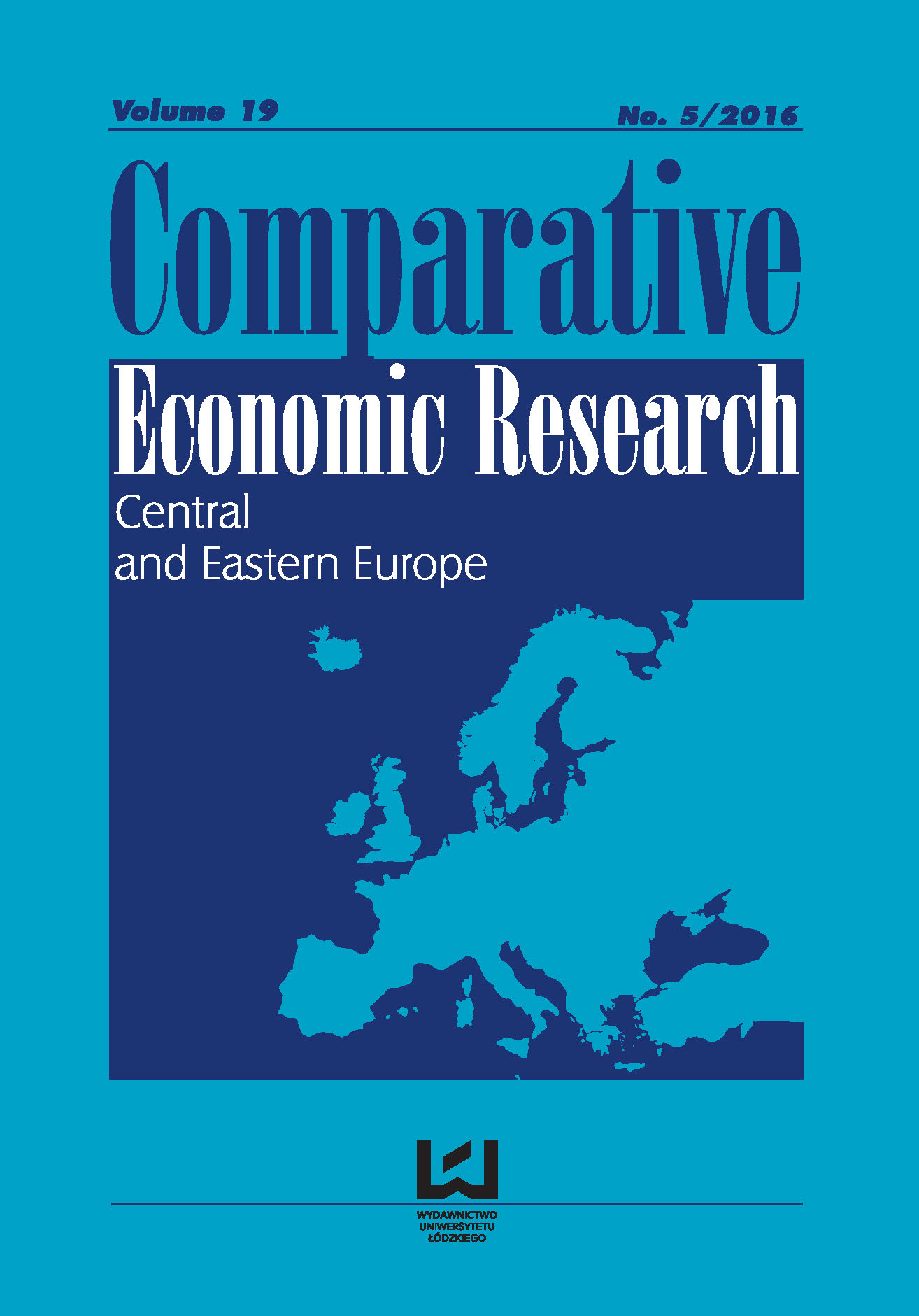What Affects The Ability To Accumulate The Best Applicants By Russian Universities? The Application Of Quantile Regression Model
DOI:
https://doi.org/10.1515/cer-2016-0039Keywords:
higher education institution, universities’ competitiveness, Russian education system, students, quantile regressionAbstract
The aim of this paper is to evaluate which university’s characteristics have the greatest impact on the competitiveness of universities in their ability to attract better students in Russia. We examined the impact of three groups of factors,related to teaching, research and entrepreneurial activities of universities. The quantile regression model was applied for the subsample of public and private higher education institutions localized in Russia.
The results prove that not only traditional, teaching-related factors affect the attractiveness of the universities. We found that the research quality and entrepreneurial experience both increase the ability to accumulate the best applicants by Russian universities. However, the synergy between training, research and business activities is not always achieved. The importance of science and business-oriented activities varies between public and private institutions. According to the results from the quantile regression the importance of the certain factors differs between the quantiles of the dependent variable distribution.
Our findings might be useful for the governmental authorities during the universities’ assessment as well as for the higher education institutions themselves – in order to define their strategic development and attract better students.
Downloads
References
Brew A. (2010), Imperatives and challenges in integrating teaching and research, ‘Higher Education Research & Development’, 29(2), 139–150.
Google Scholar
Buela-Casal G., Gutiérrez-Martínez O., Bermúdez-Sánchez M.P., Vadillo-Muñoz O. (2007), Comparative study of international academic rankings of universities, ‘Scientometrics’, 71(3), 349–365.
Google Scholar
Denisova-Schmidt E., Leontyeva E. (2014), The Unified State Exam in Russia: Problems and Perspectives, ‘International Higher Education’, (76), 22–23.
Google Scholar
Elken M., Wollscheid S. (2016), The relationship between research and education: typologies and indicators. A literature review, Nordic Institute for Studies in Innovation, Research and Education.
Google Scholar
Etzkowitz H. (1998), The norms of entrepreneurial science: cognitive effects of the new university–industry linkages, ‘Research policy’, 27(8), 823–833.
Google Scholar
European Commission (2012), Higher Education in Russian Federation, available at: http://eacea.ec.europa.eu [access date: 20.07.2016].
Google Scholar
Hacker A., Dreifus C. (2010), Higher education?, New York: St Martin’s Press.
Google Scholar
Jenkins A. (2004), A guide to the research evidence on teaching-research relations, York: Higher Education Academy.
Google Scholar
Koenker R, Basset G. (1978), Regression quantiles, ‘Econometrica’, 46(1), 33–50.
Google Scholar
Lee J.J., Rhoads R.A. (2004), Faculty entrepreneurialism and the challenge to undergraduate education at research universities, ‘Research in Higher Education’, 45(7), 739–760.
Google Scholar
Locke W., Cummings W.K., Fisher D. (Eds.). (2011), Changing governance and management in higher education: The perspectives of the academy (Vol. 2). Springer Science & Business Media.
Google Scholar
Mägi E., Beerkens M. (2015), Linking research and teaching: Are research-active staff members different teachers?, ‘Higher Education’, 1–18.
Google Scholar
Prince M.J., Felder R.M., Brent R. (2007), Does faculty research improve undergraduate teaching? An analysis of existing and potential synergies, ‘Journal of Engineering Education’, 96(4), 283–294.
Google Scholar
Smolentseva A. (2003), Challenges to the Russian academic profession, ‘Higher education’, 45(4), 391–424.
Google Scholar
Smolentseva A. (2015), Bridging the gap between higher and secondary education in Russia, ‘International Higher Education’, (19).
Google Scholar
Trzpiot G. (2011), Some tests for quantile regression models, ‘Acta Universitatis Lodziensis, Łódź, Folia Economica’, 255, 125–135.
Google Scholar
Trzpiot G. (2009), Estimation methods for quantile regression, ‘Economics Studies, Karol Adamiecki University of Economics in Katowice’.
Google Scholar
Zemtsov S., Eremkin V., Barinova V. (2015), Faktory vostrebovannosti vedushchikh vuzov Rossii [Factors of Attractiveness of the Leading Russian Universities Overview of Literature and Econometric Analysis of the Leading Universities]. Voprosy obrazovaniya / Educational Studies. Moscow, 4, 201–233.
Google Scholar
Downloads
Published
How to Cite
Issue
Section
License

This work is licensed under a Creative Commons Attribution-NonCommercial-NoDerivatives 4.0 International License.











